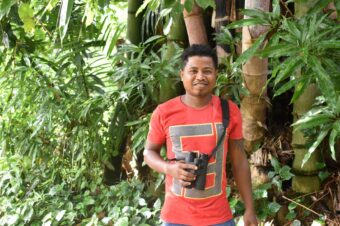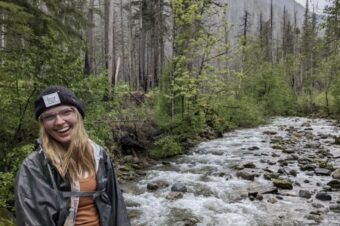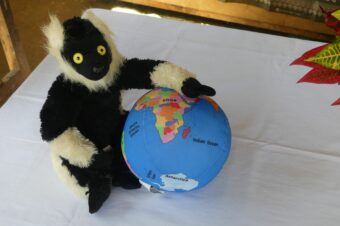Blog by MBP Volunteer, Thomas

Photo courtesy of Dr. Edward E. Louis Jr.
I am writing this entry having been in KAFS and studying the Greater Bamboo Lemur for nearly a month. After the first week detailed above I was joined by the other volunteer working on the simus project, Victoria, and we have done our best to figure out the program. I will keep up my very valid cliché by saying she is another cool person who has done cool things, and the only current volunteer not from North America (she is from Australia). We now have a pretty good grasp on the program thanks to conversations with the guides and the post-doc Cynthia, who works with the data in Omaha.
Apart from behavioral observation, there are some other facets to the research, including the habituation. This is done through a standard follow procedure but not necessarily for the whole 2 hours and can include rugged jungle hiking/climbing/running/controlled falling if the animal gets a bit spooked. We also conduct monitoring of nearby populations that are not habituated at all, taking note of any signs of the lemurs as well as recording any and all that we see. One day we found a group of twenty in the forest, which had hidden in the canopy until we were in the middle of them. They began an alarm call which I had not yet heard – a surreal scream sound that reminds me somewhat of a red-tailed hawk call. It was amazing being immersed in this group as they moved over and away from us, the skillful guides tallying the numbers, ages, and sexes of the animals.
A final aspect to the research that I was only just recently exposed to is vegetation phenology, a survey of various plants that the lemurs feed on throughout the forest. There are specific flagged trees, shrubs, and bamboo shoots that are surveyed each month, and we hiked all over the lemurs’ territories looking for new leaves, mature leaves, buds, fruits, and new shoots. Hopefully soon we will begin fecal sampling the babies born this year for genetic analysis back at the lab in Omaha. I am particularly excited about this because it overlaps a potential project I will be working on late next year fecal sampling Sumatran Tigers in Indonesia, if I get a grant I have applied for.
I will say that working in the rainforests around Kianjavato is truly a pleasure. Observing the lemurs dominates the majority of our time in the field, but there is plenty more to see. For one we have seen a few other species of lemurs, including a smaller bamboo lemur, the bizarrely colored Rufifrons, and the intimidating Black and White Ruffed Lemur. These last are I believe the second loudest animal on this Island after the mystical Indri, and can be heard from a great distance. They are also the largest lemur in our local rainforest, and act like it. The first time I saw one I was observing a few Simus individuals, and from out of nowhere came bounding through the canopy a large Ruffed Lemur, causing the Simus to disappear silently. It’s elongated snout and way of moving reminded me of a hound, to the more cat-like appearance of the Simus. (Completely arbitrary/inaccurate comparisons but having never been exposed to lemurs before my mind looks to the familiar).
-Thomas










Leave a Reply